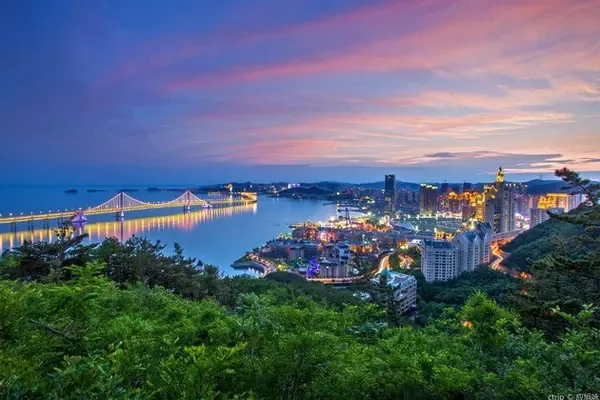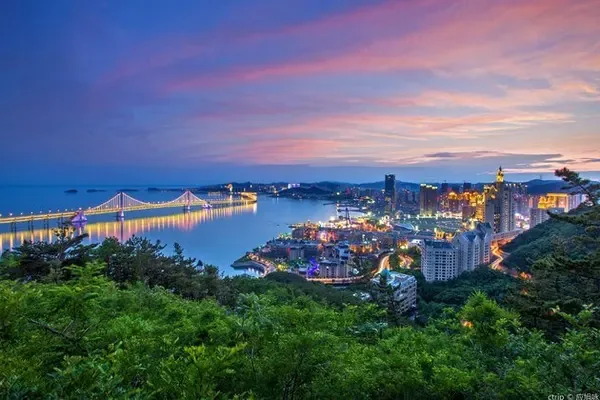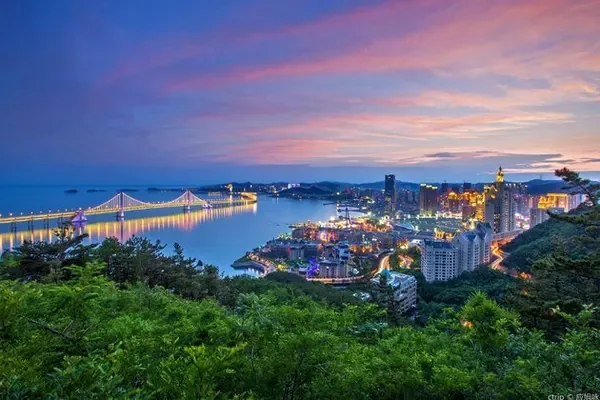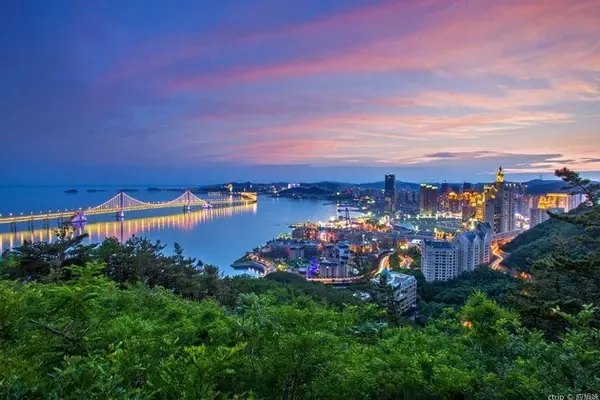China's "No. 1 in the World" reputation destination list (4)
Seeing everyone having fun all over the world, what is the record of the "Sun Tour Contest" in your circle of friends?
If you are not having fun, or are planning to start the second half of the game mode, here is a list of destinations that have the reputation of "the world's first" or "China's first in the world" in China (although most of them are new) Definitely worth everyone's collection.
See how many "No. 1 in the world" everyone has swiped?
Table of contents:
021. The No. 1 Wooden Pagoda in the World: Sakyamuni Pagoda of Fogong Temple in Yingxian County;
022. The first stone pagoda in China: Four Gate Pagoda;
023. The largest stone arch bridge in the world: Zhaozhou Bridge;
024. The longest stone bridge in the world: Anping Bridge;
025. The largest stone bridge in the world: Wuchao River Bridge;
026. The first wonder in the world: Stone Forest;
027. The largest karst cave in Asia: Tenglong Cave;
028. The No. 1 Cave in the World (1): Zhijin Cave in Guizhou;
029. The No. 1 Cave in the World (2): Wulong Furong Cave;
030. The No. 1 Cave in the World (3): Nielong Cave in Pingxiang;
full text:
021. The No. 1 Wooden Pagoda in the World: Ying County Wooden Pagoda
Shakya Pagoda of Fogong Temple in Ying County, commonly known as "Wooden Pagoda of Ying County", is located in Ying County, Shuozhou City, Shanxi Province. It is the oldest, best-preserved, and tallest wooden structure building in my country and in the world. It is tall and straight, dignified in shape and has a long history. Call it an architectural gem. The wooden pagoda in Ying County was first built in the second year of Liao Qingning (1056), and it was completed in the sixth year of Jin Mingchang. It has a history of more than 950 years. The height of the tower is 67.31 meters, the diameter of the ground floor is 30.27 meters, and the building is designed with an octagonal plane. The sub-level on the ground floor is Zhouza, the facade has double eaves, and the upper floors have single eaves, a total of five floors and six eaves. The appearance has nine floors, but the usable space is only five floors, which is called "five bright and four dark". The base of the pagoda is two layers of stone, the lower layer is square, and the upper layer is octagonal according to the tower. The body of the tower is pavilion-style, all of which are constructed of wood. The method of building the tower by connecting inner and outer groove columns is adopted. A large number of diagonal braces are used to fix the compound beams, and the struts and compound frames are combined to solve the horizontal load. Each floor uses two rings of wooden columns inside and outside to support the beam frame. There are 24 columns on the outside and 8 columns on the inside of each floor. Diagonal braces, beams, squares and short columns are used to occlude each other with mortise and tenon to form a composite structure in different directions. Beam wooden frame. The outer columns of each exposed floor stand on the beam frame of the outer column of the lower floor, and retract half the column diameter toward the center of the tower, so that the appearance of the tower forms a beautiful curve of layer-by-layer contraction. The proportion of the whole tower is appropriate, towering towering, magnificent. In 1961, Mogao Caves was announced as one of the first batch of national key cultural relics protection units.

022. China's No. 1 Stone Pagoda: Four Gate Pagoda
The Four Gate Pagoda is located on the east side of the site of Shentong Temple at the foot of Qinglong Mountain, Liubu Town, Licheng District, Jinan City, Shandong Province. It is the oldest single-story stone pagoda in my country. It is known as "the first stone pagoda in China". The Four Gate Pagoda was built in the late Sui Dynasty, more than 1,300 years ago, and is the oldest existing single-story pavilion-style stone pagoda in China. The four-door pagoda is square in plane and made of large bluestone, which is very hard and has not suffered from weathering and erosion for thousands of years. It consists of a tower base, a tower body, a tower eaves and a treasure top. The tower body is built with stones to pick out five floors as a conical roof with pointed corners at the four corners of the tower, and a stone-carved tower brake is placed on it. The body of the pagoda is made of large local stone rocks, single-layer square, 15.04 meters high, 7.4 meters wide on each side, 0.8 meters thick, with half circular arches on each side. It has been called "four-door pagoda" since Ming and Qing Dynasties. On the top of the pagoda, there are twenty-three rows of stone slabs that are shrunk and stacked layer by layer, forming a conical shape with four corners. The top end is composed of dew plates, mountain flowers, banana leaves, etc., with a simple and thick shape. There is a square tower core column in the center of the tower room, and 16 triangular stone beams support the tower top. On each of the four sides is a stone Buddha statue that was displaced by later generations. There are towering ancient cypresses behind the pagoda, surrounded by many mountains, nearby valleys and clear springs, and there are Buddhist relics such as Thousand Buddha Cliff, Nine Tiger Pagoda, and Shentong Temple Ruins. It was announced as one of the national key cultural relics protection units in 1961.


023. The largest stone arch bridge in the world: Zhaozhou Bridge
Zhaozhou Bridge, also known as Anji Bridge, is located 2.6 kilometers south of Zhao County, Shijiazhuang City, Hebei Province, across the north and south banks of the Weishui River. It was built from the first year to the eleventh year of Daye in the Sui Dynasty (605-616). It was designed and constructed by the craftsman Li Chun. Because the bridge body is all built of stone, it is commonly known as "Big Stone Bridge". It has a history of 1,400 years. Zhaozhou Bridge is 50.82 meters long, 37.02 meters span, 7.23 meters high, and 9.6 meters wide at both ends. The design of the bridge is completely in line with scientific principles, and the construction technology is even more ingenious. The bridge is a hollow-shaped arc-shaped stone arch bridge, and it is the best-preserved and oldest single-hole large stone bridge in the world. Selected by the World Records Association, the world's earliest open-shouldered stone arch bridge has created the world's most. On March 4, 1961, it was announced as the first batch of key cultural relics protection units in the country.

024. The Longest Stone Bridge in the World: Anping Bridge
Anping Bridge, also known as "Wuli Bridge", is located in Anhai Town, Jinjiang County, Quanzhou City, Fujian Province. It is the longest existing stone bridge in ancient my country. Anping Bridge spans the beach and connects with Shuitou Town in Nan'an on the opposite bank. According to the "Quanzhou Fuzhi" records: "In the eighth year of Shaoxing in the Southern Song Dynasty (1138), the Sengzu faction began to build a stone bridge, but it was not completed, and in the 21st year (1151) Zhao Lingjin, the governor of the county, completed it." It took 13 years before and after the bridge construction project was completed. It is a long beam bridge constructed of granite. The grand scale of Anping Bridge, the vastness of the project, and the magnificent structure show the creativity of the working people in ancient China. Now it is a national key cultural relics protection unit. After the completion of Anping Bridge, Ling Jin personally wrote a diary saying: "Its length is eight hundred and ten feet (2255 meters), its width is one foot and six feet (more than 5 meters), and the drainage channel is three hundred and sixty feet." In the east, west and middle of the bridge, there are also five "rest pavilions" with railings on both sides, as well as stone pagodas, stone generals and other cultural relics. The "Shuixin Pavilion" in the middle of the bridge, commonly known as "Zhongting", is the only remaining one of the five pavilions, but it has been rebuilt several times, and it is now a Qing Dynasty building. Around the pavilion, there are thirteen inscriptions on bridge construction in the past dynasties. The stone pillars on the pavilion are engraved with the couplet "There is no bridge in the world to grow this bridge" written by an ancient anonymous person, summarizing that the length of Anping Bridge is the first among ancient bridges. The piers of Anping Bridge have three forms: rectangular, semi-boat-shaped and boat-shaped piers. The bridge foundation adopts the "sleeper lying foundation method". The shape base is very different and innovative. Since the bridge was built in the Southern Song Dynasty, although it has been rebuilt more than ten times, the bridge slab was broken and damaged continuously, and the piers tilted and collapsed. In 1980, the state allocated special funds for comprehensive restoration, and the project was completed in May 1985. Anping Bridge has restored its historical appearance.


025. The largest stone bridge in the world: Wuchao River Bridge
The Wuchao River Bridge is located at the source of the Tuojiang River in Fenghuang County, Hunan Province. It flies over the deep valley of the Wuchao River. The east of the bridge is the towering Dama Mountain, and the west of the bridge is the Luotuo Mountain that goes straight into Xiaohan. If the giant dragon takes off, it will be magnificent. The bridge is made of blue-gray dolomite and built with a hollow stone-rib arch structure. The main arch has a net span of 120 meters, which is the largest in the world. The bridge is 241 meters long, 8 meters wide and 42 meters high. Its grand scale, scientific structure, graceful shape and superb craftsmanship are highly praised by bridge experts. Construction started in 1989, lasted one year, and was completed and opened to traffic in 1990. The completion of the Wuchao River Dashi Bridge is the glory and pride of the people of all ethnic groups in western Hunan. With the lowest cost and the greatest courage, the world's first-class Dashi Bridge has been built, which is 4 meters longer than the 116-meter main span of the Jiuzhaigou Dashi Bridge in Fengdu, Sichuan. , when it was completed, the span ranked first in the country. The structure is exquisite and magnificent, which is a new page in the history of stone arch bridge construction in my country. Wang Shoudao, the first Minister of Communications of the People's Republic of China, wrote an inscription: "The largest stone bridge in the world" is carved with seven characters on the bridge, shining brightly. Winding around the mountain peaks, going in and out of the cloud surface; close up, the river looks like a blue flaw, twists and turns, and goes through the gorge; overlooking the bridge, the farmhouses are vaguely hidden, covered by green bamboos, and chickens and dogs are heard. Standing on the bridge, the mountain breeze is gentle, cool and refreshing, with green water and green mountains, and a panoramic view. The Wuchao River Dashi Bridge was completed and opened to traffic, connecting the Laer Mountain area with the county seat, building a colorful bridge leading to happiness for remote areas of ethnic minorities, and paving a colorful road to economic prosperity. It is also a great spectacle of tourism. The Wuchao River Bridge was selected as the candidate world record for the world's largest highway stone arch bridge by the China World Records Association.


026. The world's first wonder: Stone Forest in Yunnan
Stone Forest, located 8 kilometers north of Lufu Town, Shilin County, Kunming City, Yunnan Province, is a famous tourist attraction in my country and one of the world-famous karst areas. It is praised as "the first wonder in the world". The stone forest scenery was formed 270 million years ago, and the long earthquake, wind and water wash have created a forest of strange stones and beautiful scenery. There are also many karst caves in the Stone Forest area. The stalagmites in the caves are full of beautiful things. The majestic and magnificent waterfalls are natural. The natural scenery of the Stone Forest is known as the "Natural Museum of Modeling and Geomorphology", which cannot be shaped by human art. Stone Forest belongs to peak forest type karst landform (karst landform), and is the only typical peak forest type karst natural landscape in the world that can be developed for sightseeing. The total area of the Stone Forest Reserve is about 3.5 million square kilometers, distributed on the land of three townships and one town in Shilin County. The Stone Forest Scenic Area covers an area of 16 square kilometers, including Liziqing Stone Forest (large and small stone forests), Naigu Stone Forest, Zhiyun Cave Underground Stone Forest, Qifeng Cave, Changhu Lake, Moon Lake, and Dadieshui Waterfall. The tour is 15 kilometers long, connecting hundreds of scenic spots such as "Ashima", "Scenic Stone Forest", "Two Birds Crossing Food", "Wannian Ganoderma", "Camel Riding Elephant", and "Mother and Child Tour". For the convenience of management, the entire scenic spot is divided into big stone forest, small stone forest, and the periphery of the stone forest. In fact, these parts are closely connected and are still a whole. Liziqing Stone Forest was developed in 1931. After 70 years of construction, a labyrinth-like tour road was built in the middle of the labyrinth-like intricate stone peaks, and it has become the main scenic spot of the Stone Forest Scenic Area. Liziqing Stone Forest is famous for its stones. Among the forest-like stone peaks and stone pillars, there are human-shaped stone peaks, and there are six pools of different sizes, including Shilin Lake, Jianfeng Pool, and Yuniao Pool. On the surface of the water, there are stone peaks piercing the blue sky like sharp swords. At the foot of the stone peaks, the blue waves are rippling, and the stones and water reflect each other, forming an extremely huge natural bonsai scenery. Wukeshu, a village of Sani people of the Yi nationality who have lived on the shore of Shilin Lake for generations, has maintained its unique folk customs. The combination of natural wonders and customs of ethnic minorities makes Liziqing Stone Forest the most popular tourist area for tourists. In 1982, it was listed as one of the first batch of national scenic spots in China.


027. The largest karst cave in Asia: Tenglong Cave in Lichuan, Hubei
Tenglong Cave is located in Lichuan City, Enshi Prefecture, Hubei Province, on the upper reaches of the Qingjiang River, 6.8 kilometers away from the city. It is known as the largest karst cave in Asia and the most beautiful karst cave in China. In 1988, 25 Chinese and foreign cave experts spent 32 days on-the-spot to investigate and demonstrate that Tenglong Cave is not only the largest karst cave in China, but also one of the super caves in the world. Tenglong Cave Scenic Spot is composed of Water Cave, Dry Cave, Catfish Cave, Cool Wind Cave, Jujuzhai, Three Dragon Gates, Huaxian Pit and other scenic spots. It integrates mountains, water, caves and forests. It is well-known at home and abroad for its unique charm of being unique, strange, secluded and unique. The name of the "Tenglong Cave" was inscribed by Wang Renzhong. There are battery cars in the cave to go back and forth, and it takes about 2 hours to go back and forth on foot. The Wolong Tunjiang Waterfall at the entrance of the water hole has a drop of more than 20 meters. It roars like thunder and is majestic. It is called: "Wolong Tunjiang is a wonder in the world." , Range Rover should explore Tamron". The scenery outside the entrance of the cave is beautiful, the entrance of the dry cave is 74 meters high, 64 meters wide, and the highest point inside the cave is 235 meters. The total length of the cave is preliminarily proven to be 52.8 kilometers, including 16.8 kilometers of underground water in the cave, and the cave area is more than 2 million square meters. There are 5 peaks in the cave, 10 halls, and more than ten underground waterfalls. The constant temperature is 14-18°C all year round, and the air is smooth. The landscape in the cave is varied and mysterious. With its magnificence, unique natural landscape and pleasant climate, Tenglong Cave is an ideal place for tourism, exploration and geological investigation. In 1989, the People's Government of Hubei Province approved it as a provincial scenic spot.


028. The No. 1 Cave in the World (1): Zhijin Cave in Guizhou
Guizhou Zhijin Cave, formerly known as Daji Cave, is located in Guanzhai Township, 23 kilometers northeast of Zhijin County, Bijie City, Guizhou Province. Zhijin Cave has a total area of more than 70 square meters, surrounded by thousands of "pagodas" and thousands of "Buddhas", "snow-pressed green pines", "iron mountain clouds", "hundred-foot curtains", "twelve zodiac signs" and rolling landscapes. The "big mural", the unique "Silver Rain Tree" and other landscapes. The karst has unique growth, the scenery is grand, majestic, varied and exquisite, covering all the morphological categories of the world's karst caves. Zhijin Cave is located on the south bank of Liuchong River, one of the source streams of Wujiang River. The initial survey of the whole cave is 12.1 kilometers long, the widest part of the two walls is 175 meters, the vertical height is mostly 50-60 meters, and the highest point is 150 meters. The cave has a volume of 5 million cubic meters and a wide space with upper, middle and lower floors. There are more than 40 kinds of karst deposits such as stalagmites, stone pillars, stone buds, and bell flags in the cave, forming a variety of karst landscapes. The tunnels are criss-crossed, the stone peaks are scattered all over, and the flowing water, intermittent ponds and underground lakes are staggered among them. It is a multi-level and multi-type karst cave. Zhijindong Cave Scenic Area has a total area of 307 square kilometers and is composed of Zhijin Cave Central Scenic Area, Zhijin Cave Ancient Town, Dongfeng Lake Canyon Scenic Area, and Biyun Lake Leisure Resort. Zhijin Cave is the essence of this scenic spot. It is a treasure house of cave resources with a magnificent scale and unique shape discovered in my country. According to experts' research, its scale, volume, shape, and landscape effects are more grand, complete, and beautiful than those in France and Yugoslavia, which are world-renowned.


029. The No. 1 Cave in the World (2): Furong Cave, Wulong, Chongqing
Wulong Furong Cave is located in Wulong County, Chongqing City. Furong Cave is a large limestone cave with a total length of 2,700 meters. The landscape inside the cave is magnificent and exquisite. There are more than 20 types of stalactites discovered, accounting for the vast majority of known species in the world. Some of these types are extremely rare in the world. On June 27, 2007, Wulong Karst, together with Stone Forest in Yunnan and Libo Karst in Guizhou, was officially included in the World Natural Heritage List as "Karst in South China". The scenic spots in Wulong that have successfully won the title of World Natural Heritage include Furong Cave, the first cave in the world, the largest group of natural bridges in Asia, and Houping Tiankeng, which is formed by a rare and rare karst system in the world. Furong Cave is a large limestone cave formed in the Quaternary Pleistocene (about 1.2 million years ago) and developed in the ancient Cambrian dolomitic limestone. The main cave of Furong Cave is 2700 meters long, with a tour path of 1860 meters, a bottom width of 12-15 meters, a maximum width of 69.5 meters, a cave height of 8-25 meters, and a maximum height of 48.3 meters. The average temperature in the deep part of the cave is 16.1 degrees. The total area of the cave bottom is 37,000 square meters, of which the brilliant hall covers an area of 11,000 square meters, which is the most spectacular. The stalactites in the cave, ranging from carbonates to sulfates, have a wide variety of chemical deposits, including the sedimentary characteristics of nearly 30 types of caves in the world. Among them are stone waterfalls and stone curtains with a width of 15 meters and a height of 21 meters, palm-shaped stalagmites as smooth as jade, and curly stones and stone flowers as bright as stars. It is rare in China. The red coral and canine-shaped calcite crystals in the clean water basin are even more precious. A large number of secondary chemical deposition forms form dozens of various landscapes. The main scenic spots in the cave include Jinluan Palace, Leifeng Pagoda, Yuzhu Qingtian, Yulin Qionghua, Undersea Dragon Palace, Giant Screen Waterfall, Stone Field Pearl, Reproductive God Pillar, Coral Yaochi, etc., to feel the magic of nature.


030. The No. 1 Cave in the World (3): Nielong Cave in Pingxiang, Jiangxi
Pingxiang Nielong Cave is located in Qingxi Village, Futian Town, Shangli County, Pingxiang City, Jiangxi Province. Nielong Cave is a natural karst cave formed 180 million years ago. The whole cave is 4 kilometers long, with twists and turns, deep and quiet. The wide part of the cave is more than 30 meters high, which can accommodate thousands of people, and the low and narrow part can only allow one person to pass sideways. It is also known as "the first cave in the world". According to legend, there was an evil dragon in Poyang Lake in ancient times who tried to turn Jiangxi into a state of Ze, causing troubles and harming the people everywhere, and was subdued by Xu Zhenjun in a cave under Yangqi Mountain in Pingxiang, so the Nielong Cave got its name. Nielong Cave has a unique water scene, full of sound and color, and the stream in the cave is accompanied all the year round, and the water turns with the cave, and the cave is alive because of the water. "Dongtian Waterfall" is a wonder in the world. I can see the clear spring rushing down from the cliff in the cave and pouring directly into the Bitan. The water is like the Milky Way hanging upside down, the sound of the waterfall is like thunder, and the sound shakes the world, which is very spectacular. "Lingquan" is an oval clear pool with an area of about three or four square meters and a water depth of about one meter. The water in the pool is half a meter higher than the underground river and never overflows or falls all the year round. It can be called a wonderful coincidence of Tiangong's intention. "Mushroom Mountain" is several meters high, with overlapping "peaks and ridges". The clear stream below it flows around the mountain and merges into countless small waterfalls. Roar, like a three-dimensional landscape scroll. "Xianshan Pool" is a famous scene in the cave. The big obstinate stone is as high as a two-story building and is ocher yellow. There is a "Tianchi" "chiseled" on the top of the mountain. There are two stone pillars on both sides of the mountain. , the dragon pattern on the column body is indistinct. The pool is about one meter deep, and the water is crystal clear. The stone flowers at the bottom of the pool are as white as frost, like corals in the sea, bright and gorgeous, sticking out of the water, like pieces of duckweed, which is amazing.


(Follow-up)



